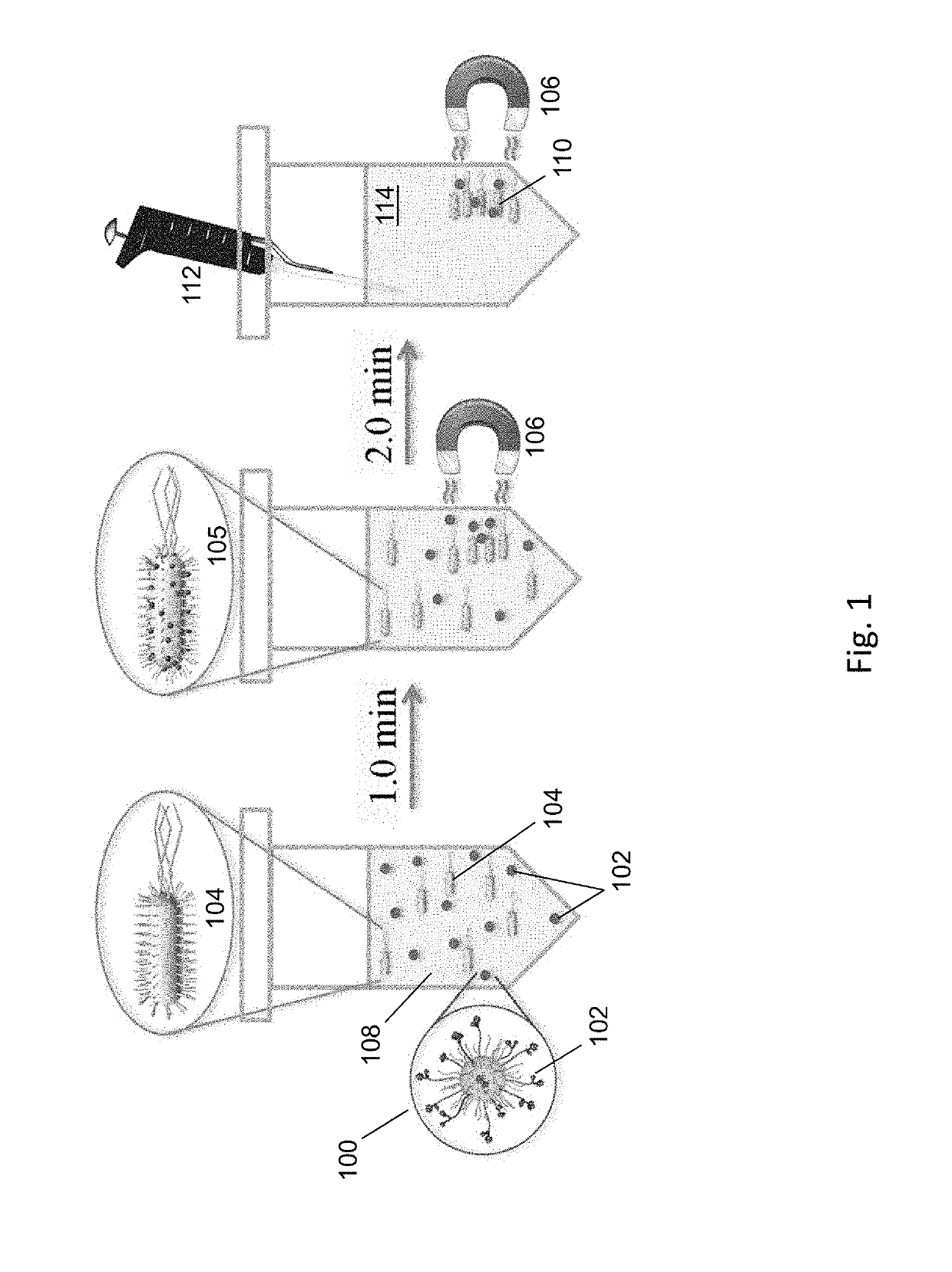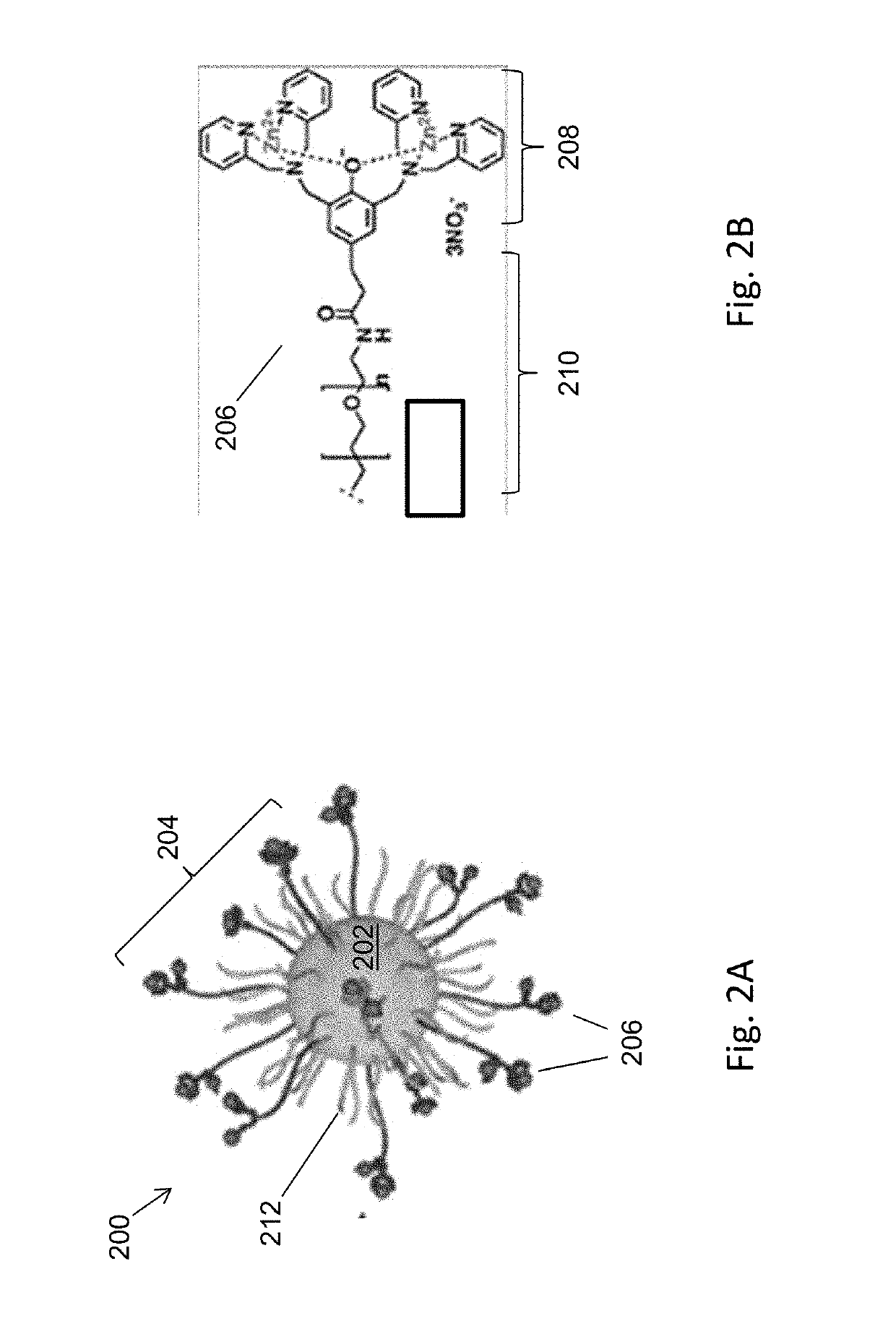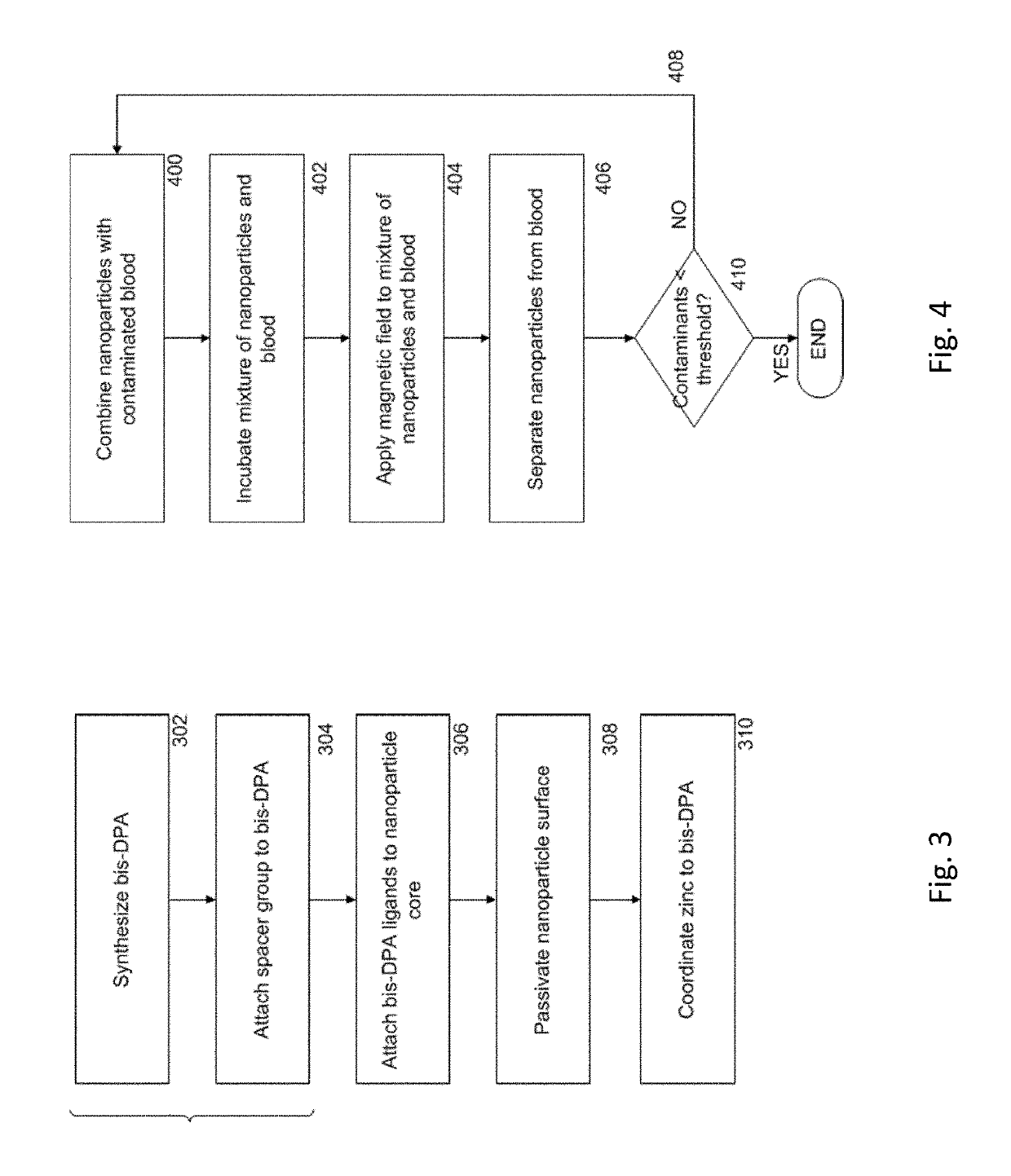Magnetic separation using nanoparticles
a technology of nanoparticles and nanoparticles, applied in water installations, disinfection, construction, etc., can solve the problems of multiple organ dysfunction and death, and achieve the effects of short incubation time, high selective separation, and rapid binding between nanoparticles and target species
- Summary
- Abstract
- Description
- Claims
- Application Information
AI Technical Summary
Benefits of technology
Problems solved by technology
Method used
Image
Examples
example 1
cle Synthesis and Characterization
[0076]FIG. 8A shows a scheme 800 for the preparation of magnetic nanoparticles modified with bis-DPA-PEG-Zn (referred to herein as NPPEG-DPA-Zn). Bis-DPA with a PEG (MW=10 kDa) spacer (bis-DPA-PEG-COOH) was immobilized on the surface of 100 nm diameter amine-terminated Fe3O4 magnetic nanoparticles (approximately 300 amines per nanoparticle, SiMAG-Amine particles, chemicell GmbH, Berlin, Germany) through carbodiimide chemistry using EDC and (sulfo-NHS). Excess bis-DPA-PEG-COOH was activated by N-hydroxysulfosuccinimide (sulfo-NHS) with EDC (10-fold molar excess each) and added to a solution of nanoparticles. The nanoparticle solution was washed twice with carbonate buffer (50 mM sodium carbonate, pH 9.5) using a magnetic separator (MagnetoPURE, chemicell GmbH). After 2 hours of reaction at room temperature, the modified nanoparticles were washed twice with carbonated buffer.
[0077]Unreacted free amines on the surface of the nanoparticles were passivat...
example 4
n of Endotoxins from a Buffer Solution
[0096]To study the ability of NPPEG-DPA-Zn to remove endotoxins, magnetic separation of endotoxins from solution was performed in a test tube with various concentrations of NPPEG-DPA-Zn and NPPEG. Nanoparticles (with concentrations ranging from 4.0×104 to 2.0×106 / mL) were added to a standard endotoxin solution in PBS of 1.0 EU / mL in 1:1 volume ratio (ToxinSensor™ Chromogenic LAL Endotoxin Assay Kit (Genscript USA Inc., Piscataway, N.J.). After incubation for 1 minutes at room temperature in a test tube, an external magnetic field was applied, separating the nanoparticles from the solution. The remaining solution was collected and endotoxins in the collected solution were measured by using the ToxinSensor™ Chromogenic LAL Endotoxin Assay Kit.
[0097]Referring to FIG. 13, NPPEG-DPA-Zn decreased the concentration of free endotoxin in PBS as the concentration of NPPEG-DPA-Zn increased, to as low as 9.0% of the starting concentration (curve 350). NPPEG...
example 7
for In Vivo Separation
[0121]To demonstrate that bacterial separation can work for in vivo systems, an animal model protocol was developed. PDMS “chips” including multiple parallel microfluidic channels were prepared. The microfluidic channel design emulated capillary microcirculation, which maintains the viability of fragile circulating red and white blood cells as well as preventing thrombosis (clot). The channel diameter was determined based on a balance between having sufficiently large channel diameters to minimize shear stress and flow irregularities and the loss of functional surface area that results from increasing diameter.
[0122]To demonstrate that bacterial separation / filtration system and extracorporeal circuitry works in vivo, an established rat model of septic rats placed onto cardiopulmonary bypass circuits can be used. Adult male Sprague-Dawley rats can be rendered septic by cecal ligation and puncture (i.e. their bowel will be punctured to induce septic shock), mecha...
PUM
| Property | Measurement | Unit |
|---|---|---|
| molecular weight | aaaaa | aaaaa |
| molecular weight | aaaaa | aaaaa |
| molecular weight | aaaaa | aaaaa |
Abstract
Description
Claims
Application Information
 Login to View More
Login to View More - R&D
- Intellectual Property
- Life Sciences
- Materials
- Tech Scout
- Unparalleled Data Quality
- Higher Quality Content
- 60% Fewer Hallucinations
Browse by: Latest US Patents, China's latest patents, Technical Efficacy Thesaurus, Application Domain, Technology Topic, Popular Technical Reports.
© 2025 PatSnap. All rights reserved.Legal|Privacy policy|Modern Slavery Act Transparency Statement|Sitemap|About US| Contact US: help@patsnap.com



